

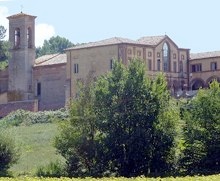
The church and convent belonged to the Observant Franciscans (Zoccolanti).
Buonriposo
According to tradition, St Francis established the Eremo di Buonriposo on Monte Citerone, some 5 km from the city, in the early 13th century, as a stopping place on his way to la Verna. It was documented in 1352, when the Commune decided to install a bell here that could be used to warn of any imminent danger of a Visconti invasion. However, tradition has its origins in the early 13th century
Friars from the new order of Gesuati established itself nearby in 1365, and there was continual tension between the two communities. The Commune intervened in 1415 by financing the move of the Gesuati into the city, leaving the locality to the Franciscans. By this time, the latter were associated with the new Observant movement. (For the later history of the Gesuati in Città di Castello, see the page on the Chiesa del Seminario).
The site became precarious in the late 1470s and 1480s because of the wars between Nicolò Vitelli and the papacy. This prompted the friars to seek a safer location for their convent, although they retained ownership of the beloved hermitage of Buonriposo.
San Giovanni Battista
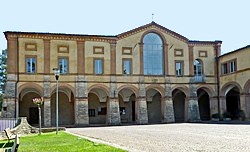
The first church here seems to have been begun in 1473 by Raniero Bandini, the abbot of San Benedetto di Scalocchio. However, the political problems mentioned above probably impeded the project, and it was incomplete when Bandini died in an outbreak of plague in 1479. The Franciscans from Buonriposo then took it over with financial help from the Vitelli, but without the approval of Pope Sixtus IV.
-
✴An inscription on the architrave [of the portal] suggests that the church was largely complete by 1503.
-
✴In 1508, the friars petitioned the Commune for finance for a new road to connect their convent to the city.
-
✴In 1519, Pope Leo X (a member of the Medici family and an ally of the Vitelli) finally approved the friars’ move to the new convent.
-
✴The well in the cloister is inscribed “DOMINUS JULIUS DE VITELLIS MDXXVI”: this records the fact that Bishop Giulio Vitelli completed the original construction of the complex in 1527.
-
✴An inscription to the left of the entrance records that Domenico Scribonio Cerboni,Bishop of Imola, consecrated the church in 1529.
The church was remodelled in the 17th and 18th centuries. Nicolò Barbiani built the facade and portico in 1687.
The convent was suppressed in 1810 and again in 1866, but was ceded to a Franciscan community in 1894 in return for a substantial payment.
Interior of the Church
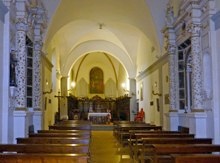
Baptism of Christ [date ?]
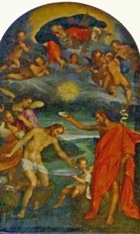
Holy Family [date?]
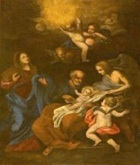
Madonna and Child with saints (17th century)
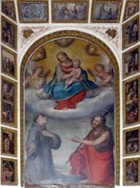
Oratory
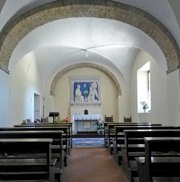
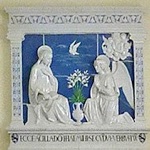
This oratory is off the left wall of the church. The relief on the altar wall is a [modern ??] copy of a relief (ca. 1475) of a glazed terracotta relief of the Annunciation by Andrea della Robbia in the Chiesa Maggiore at the Franciscan sanctuary of La Verna.
Art from the Church
Works in the Pinacoteca Comunale
The collection in the loggia of of the Pinacoteca Comunale includes a number of glazed terracotta reliefs from San Giovanni Battista that are attributed to Andrea della Robbia or his workshop. They were transferred to the gallery in 1872.
Assumption of the Virgin (early 16th century)
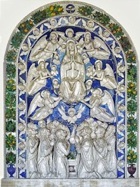
Adoration of the Shepherds (early 16th century)
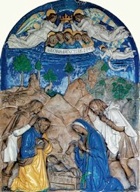
Madonna and Child with angels (early 16th century)
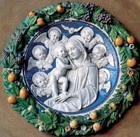
Adoration of the Magi (ca. 1520)
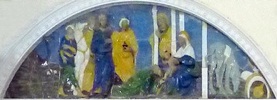
This glazed terracotta relief, which is attributed to Santi Buglioni, was first documented in 1878 in the lunette on the right wall of San Giuseppe (the church of the nuns of the Monastero di Santa Cecilia in Paradiso). It bears the arms of Pope Leo X. Giuliana Rosini (referenced in the page on the nunnery) proposes that it was moved there from San Giovanni Battista after its suppression in 1861.
Read more:
A. Ascani, “Trilogia Francescana”, Città di Castello (1964) pp 87-121
Return to Monuments of Città di Castello.
Return to the Walk I.

